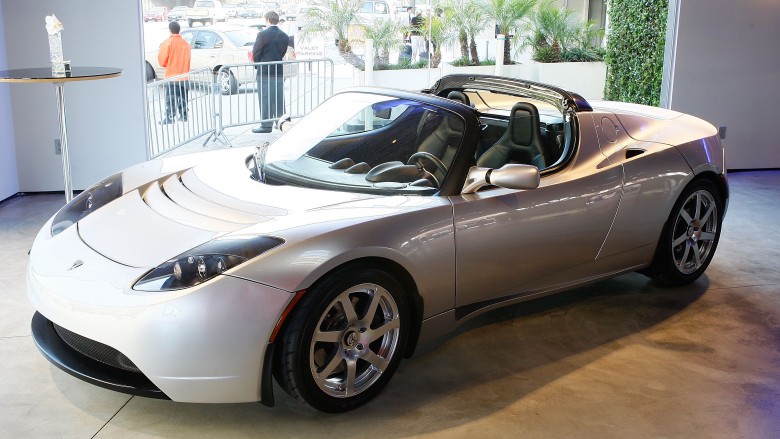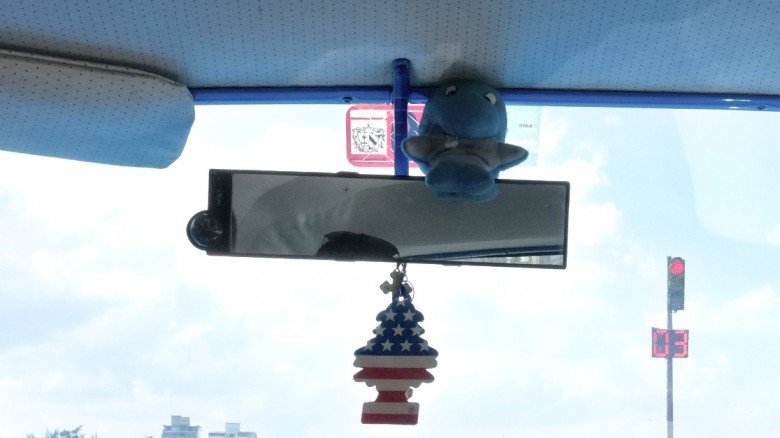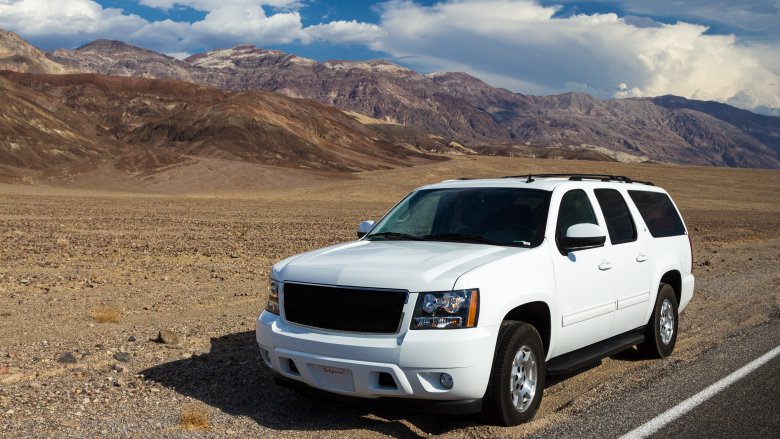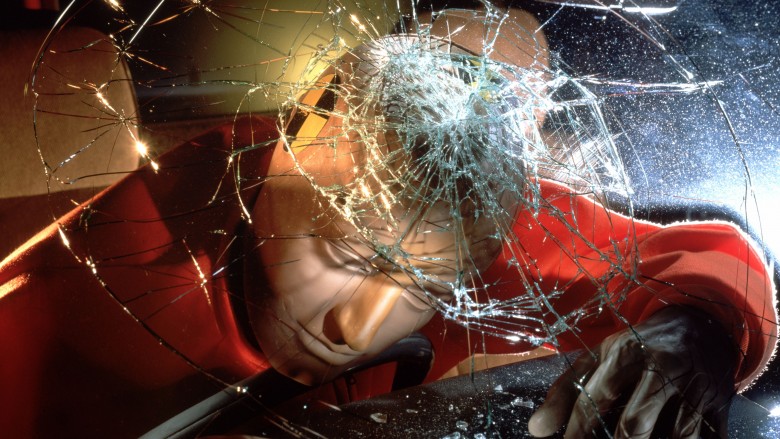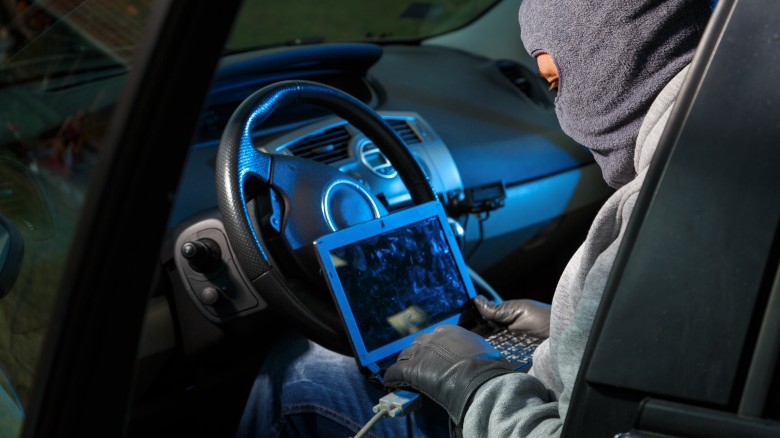Secrets Car Makers Don't Want You To Know
Cars, like smartphones and dentistry, are the types of conveniences we're really going to miss after a race of super intelligent apes decides they could do a better job running the planet. HAIL APES! But while creating a product that has become an indispensable part of modern society, car manufacturers might have wandered into some ethically ambiguous areas.
Teslas are not as green as they seem
Before Elon Musk was an aspiring James Bond villain hoping to launch nuclear weapons at Mars for kicks, he was just a regular Silicon Valley billionaire sinking his fortune into an electric car company. In 2004, Musk started a little car company called Tesla with the goal of creating a vehicle powered entirely with electricity and that looked awesome. Despite some setbacks, Musk was able to bring a sweet all-electric car to market in 2009.
The vehicles produced by Tesla have won the accolades of various environmental groups, and traditional automotive companies have begun taking electric vehicles seriously. One of the major selling points for Tesla ownership is how good for the environment they are. But Teslas are not—as we've been led to believe—made out of recycled yoga mats and discard Whole Foods receipts. Teslas are made out of more or less the same materials that a traditional vehicle would use. Those materials are mined, refined, and shipped using the exact same carbon-vomiting methods used in the manufacture of an SUV. In fact, the carbon footprint for building an electric car is significantly higher due to the complexity of the design.
Even though Teslas and their like are powered by electricity instead of gasoline or baby seal tears, that electricity still has to be produced somehow. All Teslas do is shift the pollution generated to another source while allowing their owners to feel better about themselves. Environmentally speaking, electric vehicles are a step in the right direction, but they are not the pollution-eating magic bullet solution to our environmental problems that their owners make them out to be. Unless Tesla owners are recharging their vehicles by hooking them up to an exercise bike powered by a kidnapped clerk from Lululemon—and some of them probably are—they are still using energy created from environmentally unfriendly sources, and it might be wise for them to dial the smugness back just a bit.
That new car smell is kind of disgusting
There's pretty good chance most of the items on the periodic table, except hopefully plutonium and beryllium, are somehow involved in the construction of a modern automobile. A lot of materials and very complicated manufacturing methods are used when building the same car that dramatically dies while driving down a dimly lit dirt road in Deliverance country.
One unexpected and much beloved byproduct of automobile manufacturing is that oh so intoxicating new call smell. The unfortunate thing about new car smell is that it's not made by harnessing the aroma from a sweatshops full of baking grandmas. New car smell is a combination of some really scary-sounding stuff like benzene, toluene, and that stuff used to embalm human corpses before burying them in an airtight container. Some environmental researchers even believe prolonged exposure to new car smell can cause all sorts of long-term health problems. Like hot dogs, it is probably for the best not to think about what goes into making that new car smell we all enjoy.
Your car was not in the commercial
Like most things that only last 30 seconds, a whole lot of work goes into producing a car commercial. Creative vision often violently collides with logistical and financial limitations. On top of all of that, if the commercial is for an entirely new model of car, there's a pretty good chance the car might not technically exist at the time of filming. Even the most gifted director of our time might run into problems when filming a commercial for a car that's on another continent. London-based VFX studio The Mill thought it would be so much easier to film a car commercial without having to worry about the car being on set.
For their purposes, the VFX geniuses at The Mill built a rig named "The Blackbird," and the thing has more IMDB credits than James Cromwell at this point. The Blackbird is an automotive chameleon. Looking more like a vehicle suited for a War Boy rather than someone ready for 48 low monthly payments, the Blackbird can have anything from a MINI Cooper to a Nissan Titan CGI'd over its exterior. The high-performance electrical engine allows the Blackbird to simulate the behavior of any vehicle without creating any exhaust that would need to be digitally removed later. Its length and width can be adjusted with the push of a button to fit the profile of most vehicles currently on the market.
It's really a shame that the Blackbird isn't available at the neighborhood dealership because it seems a heck of a lot cooler the Honda Fit it usually stands in for.
SUV makers prey on your insecurity
In the 1990s, SUV sales began to surpass minivans, and the auto industry was a little surprised by this development. From a production and design standpoint, minivans and SUVs are nearly identical. The two vehicle types have a similar cargo capacity and carry roughly the same number of passengers. Taken aback by the sudden shift in demand, the automotive industry was more than happy to build as many SUVs as the market could bear. To stay ahead of the changes in customer demand, Chrysler, Ford, General Motors, and Honda conducted some crash research and made some rather interesting and humorous discoveries about the fastest-growing segment of their market.
Research showed SUV drivers tended to be slightly insecure about practically everything in their life. The research indicated SUV drivers felt nervous about parenthood, marriage, and their careers while also exhibiting a strong desire to dominate those around them. Car manufacturers took all of that research into account and made cosmetic design tweaks to make their vehicles look more imposing and domineering.
Marketing was changed as well. There's a very specific reason most SUVs in advertisements are shown on an inclined surface while a masculine model looks slightly away from the camera. Rest assured that when an SUV driver in the real world looks off into the distance, they're not silently reflecting on how confident and in control they feel.
Dead bodies crash tested your car
Crash tests on vehicles, besides being oddly soothing to watch, have a some practical applications in the field of automotive safety. Engineers look at the data accumulated during a crash test and use it to build a safer vehicle. Crash testing is how we figured out how to build cars that wouldn't explode after a minor accident. Wanting to see what kind of damage a car accident would do to a human body, engineers got the bright idea to place cadavers in vehicles before crash testing them.
Nowadays, engineers mainly use highly sophisticated crash test dummies to gauge the type of damage a passenger would receive, but there's only so much that can be learned in simulation. Human cadavers are still used in crash tests conducted by the National Highway Traffic Safety Administration (NHTSA) and various universities around the world. Human crash testing is how we figured out that seat belts are a good idea.
The first cadavers used for this type of testing were "liberated" from medical schools. Nowadays, the cadavers are treated with the utmost respect. Often, individuals volunteer their bodies for this type of research, which is probably the most insanely awesome thing one can do after dying.
Everything about your car can be hacked
While self-driving cars are just slightly out of reach at the moment, modern cars sure do have a lot of fancy abilities just the push of a button or a vocal command away. These options would have seemed insane a generation ago: keyless ignition, rear-facing cameras, and incredibly awkward Bluetooth options are really nice. Unfortunately, those perks tend to leave new cars vulnerable to certain morally challenged individuals with an excess of time on their hands.
Here's the thing about all of those fancy options: they largely rely on signals from cellular or Bluetooth sources for activation. As smart as some of those features seem, a new car is pretty stupid, like send all of your money to the crown prince of Niagara stupid. Using off-the-shelf programs—no, we will not link to them—the automatic doors, keyless ignition, and even the accelerator of a vehicle could be hijacked and remotely controlled. Perhaps we'll see a revival of the Pinto for security-conscious customers in the near future.
Electric cars are not a new idea
Despite the slick public relations campaign coming out of Silicon Valley, electric cars are not a new idea. Some car aficionados might fondly recall the doomed EV-1 released in the 1990s that seem full of promise and potential. The first all-electric vehicle predated the EV-1 by a century or so depending on how you define the term "car." The first electrical carriage was built in the 1830s, and electric vehicles hit the market in the 1890s.
As time went on and car makers transformed from crazed hobbyists into respectable businessmen, it was anyone's guess what would power their inventions. In the 1890s, one of the earliest format wars raged as automotive consumers had gasoline, electric, and steam engines to choose between when shopping for a car. Electric and gasoline-powered engines were neck and neck for a while until an ungodly amount of cheap and easy to access oil was discovered in Texas in the early 1900s. Gasoline engines came to dominate the market, and electric cars were all but forgotten. While modern electric vehicles are pretty awesome and do have a lot of world-changing potential, they are also another rebooted idea we have to tolerate.
The auto industry conspired to destroy the electric streetcar
In the 1930s, the automobile industry had a wee bit of a problem on their hands. No one was buying their vehicles, and the automobile manufactures were hemorrhaging money faster than a lottery winner on a cocaine binge. Car manufacturers decided that streetcars—rather than the grinding poverty of The Great Depression and the relative crappiness of their product—were to blame for their sluggish sales and decided to do something about it.
Ford Motor Company, General Motors, Firestone Tires, and a few oil companies got together to form the innocuous-sounding National City Lines company, which then went about buying every streetcar company they could get their hands on. Oddly, there was a corresponding jump in automobile sales every time one of these streetcar lines got shut down.
There are two schools of thought behind why the big automotive companies systematically shut down every streetcar service they purchased. The auto companies like claim that the operational costs of maintaining the streetcar networks forced them out of the business. Maintaining and expanding a streetcar network is kind of an expensive operation, whereas a bus network is rather cheap by comparison, so their argument doesn't sound that crazy. The other theory—popularized by the drunk uncles of America during Thanksgiving dinner—is that the streetcar service was deliberately killed off because it was a little too competitive with the infant automobile industry, and the drunk uncles also do have a point. Regardless, after the streetcar networks were shut down, automobile sales to individuals skyrocketed, and the rest is history.
There is nothing voluntary about a voluntary recall
When designing and selling any product, whether it's a burrito or a cell phone, mistakes are occasionally made. When a car company makes a mistake, a "volunteer" from the engineering department is offered up in ritualistic sacrifice to the vengeful gods at the National Highway Transportation Safety Association, a recall is made, and things quickly return to normal. Reasons for a product recall can vary greatly, but the procedure is usually the same. The mistake is spotted, and a car company will send out a batch of letters informing their customers about a "voluntary recall" they are ordering. Considering that recalls are insanely expensive and tend to generate a lot of bad press, it sure is nice that the automobile companies can admit they made a mistake and work diligently to fix the problem they created.
But here's the thing about voluntary recalls initiated by an automotive company: they are not voluntary. A recall letter is written in a way that makes it seem like the car company ordered a recall out of the kindness of their cold dead hearts, when in actuality the NHTSA has ordered them to initiate a recall. Recalls are typically ordered after the NHTSA accumulates enough data to recognize there's a serious problem with a particular make and model of vehicle. Those friendly-sounding recall letters only showed up in your mailbox because the car manufacturer is utterly terrified of what the NHTSA would do to them.
Drive safe, guys!

